Hildreth Meière Documentary Series - Watch Trailer
Hildreth Meière Documentary Series - Watch Trailer
Commissioned by: Citizens Committee for the Army and Navy
In 1955, Hildreth Meière wrote:
During the Second World War, being too old for the Waves, I taught First Aid, and as Vice-President of the Citizens Committee for the Army, Navy and Air Corps, Inc., organized a group of artists who designed and painted portable triptychs for the Service chaplains. We sent out over five hundred, of which I did over seventy.1
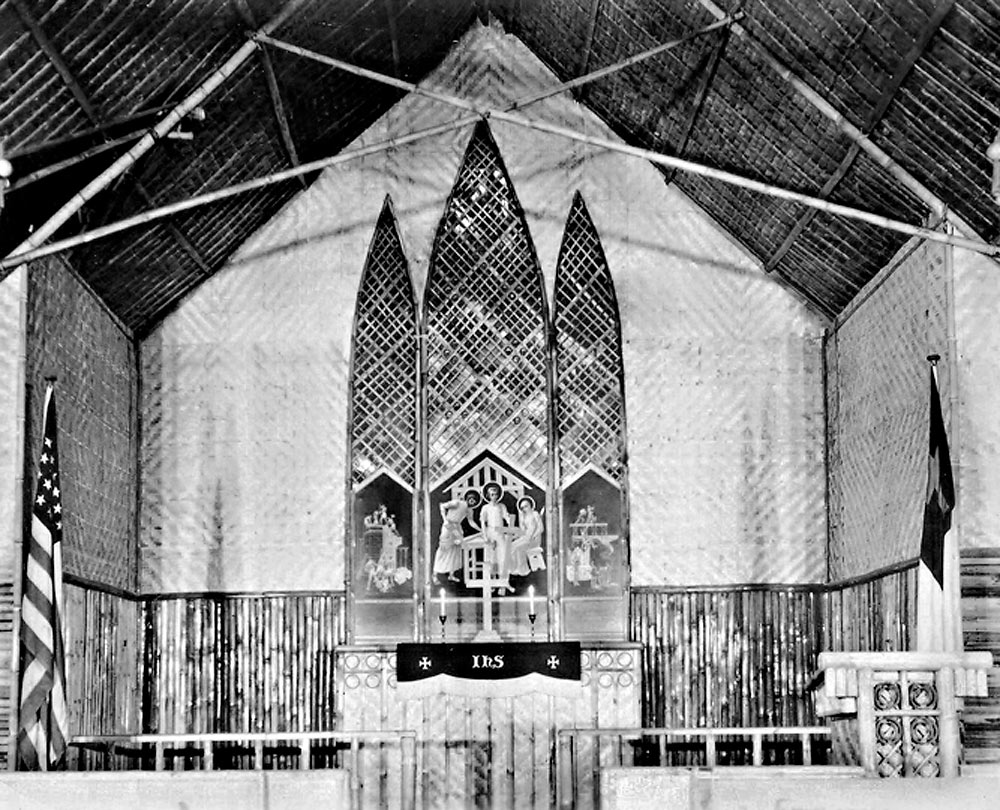
Copy of Meière’s Triptych 146, Christ in the Carpenter's Shop; Building Jerusalem; Servicemen Building Bridges, in a temporary chapel in the Pacific during WW II
The portable, folding triptychs were painted with religious subjects on variously shaped wood panels for the army and air force, or on steel panels for the navy. Most of the shapes offered were four feet high by four feet wide.
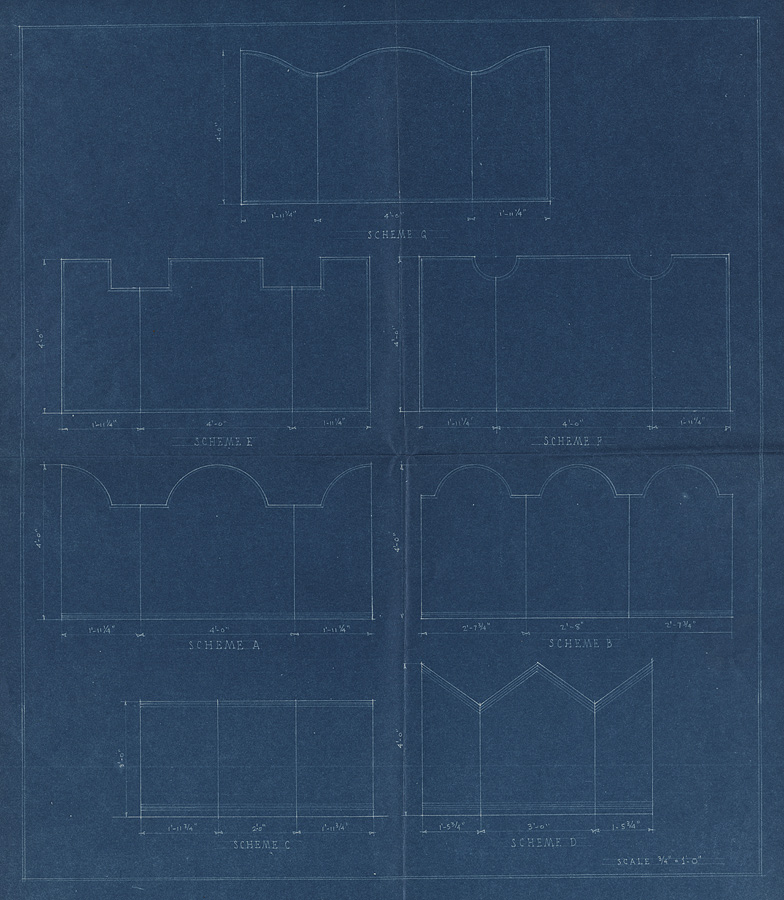
Blueprint showing seven shapes of folding, portable triptychs. Photograph in Citizens Committee for the Army, Navy and Air Force Records, 1940-1945. Archives of American Art, Smithsonian Institution, Washington, DC
A triptych could transform any military site into a temporary chapel. Each unit requesting a triptych received an original design inspired by the unit’s needs.
Underlying all these paintings, regardless of their style and theme, was a desire by the artists to relate to young servicemen. Sensitive to the servicemen’s anxieties, homesickness, and yearning for familiar religious symbols, the artists asked them to renew their faith in a common God while fulfilling a patriotic mission.2
Upon his division’s receipt of a triptych, a brigadier general wrote:
The triptych was dedicated in a colorful and impressive outdoor ceremony. The massed colors of the artillery organizations of the division flanked the work, which was mounted on two of our howitzers. The inspiring ceremony will long be remembered by those present. It is hoped that the altarpiece may accompany us wherever we go in the days ahead.3
The initial artists for the triptychs were selected through a competition held in 1941. Their triptychs were exhibited at the Metropolitan Museum of Art, and two were reproduced in the New York Times, including Triptych 9 by Meière and Louis Ross depicting the Lions of Judah.
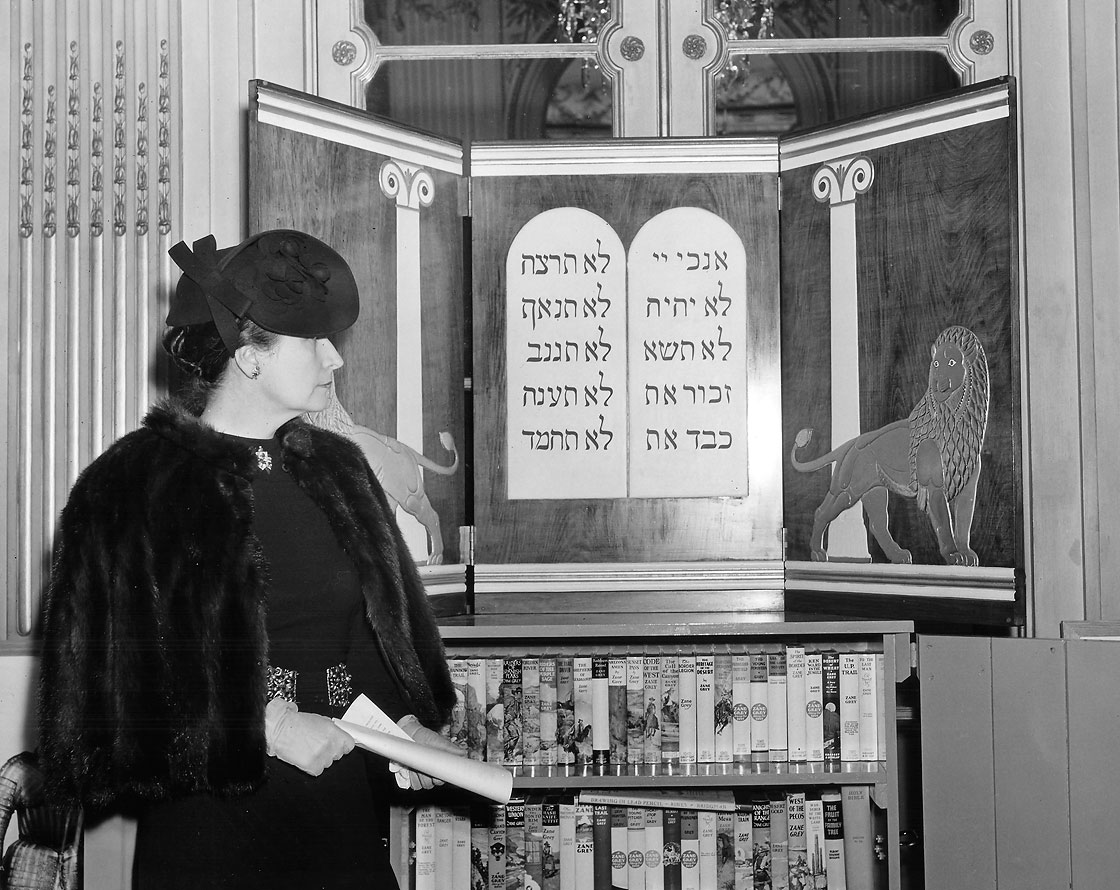
Meière with Triptych 9, the Lions of Judah, that she painted with Louis Ross. Photograph taken at Vanderbilt Mansion, October 27, 1941
A master gilder, Ross would have been responsible for the gilding of the two lions executed in raised gesso:
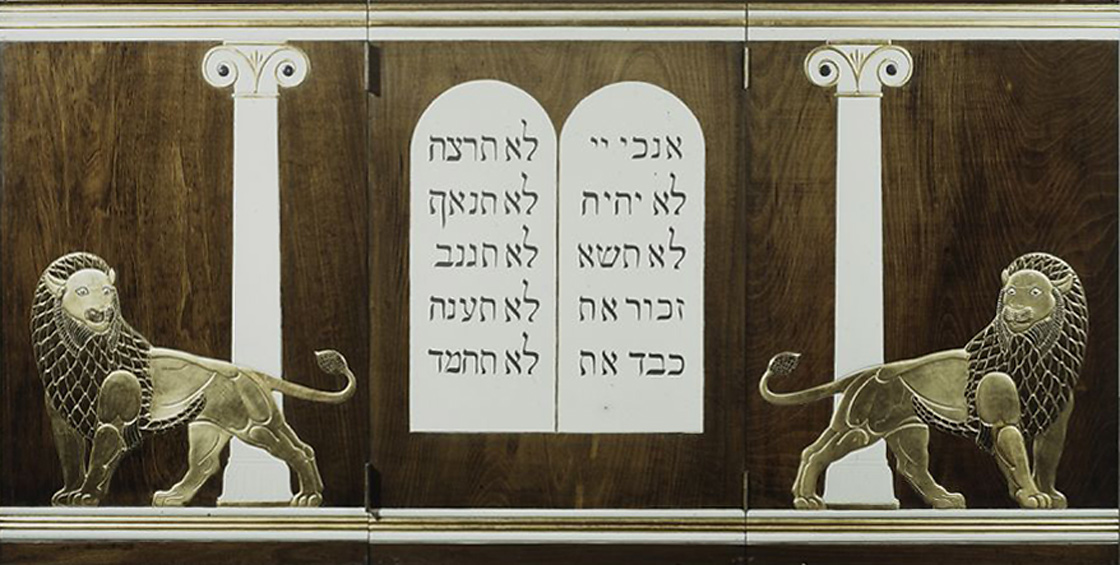
Triptych 9 by Hildreth Meière and Louis Ross. Photograph in Citizens Committee for the Army, Navy and Air Force Records, 1940-1945. Archives of American Art, Smithsonian Institution, Washington, DC
If a triptych survived, the donor could designate its disposal after the War. Many were given to small churches.4 A list of triptychs and their disposition can be found in “Triptych History” in the Hildreth Meière Papers, Archives of American Art, Smithsonian Institution, Washington, DC.
Meière was photographed working on Triptych 138 depicting St. Martin of Tours and a Beggar. Originally placed in the Office of Chief of Chaplains, Army, Washington, DC, the triptych survived the war and was sent on February 15, 1949, to John N. Taylor in Dayton, Ohio. It has since been lost.
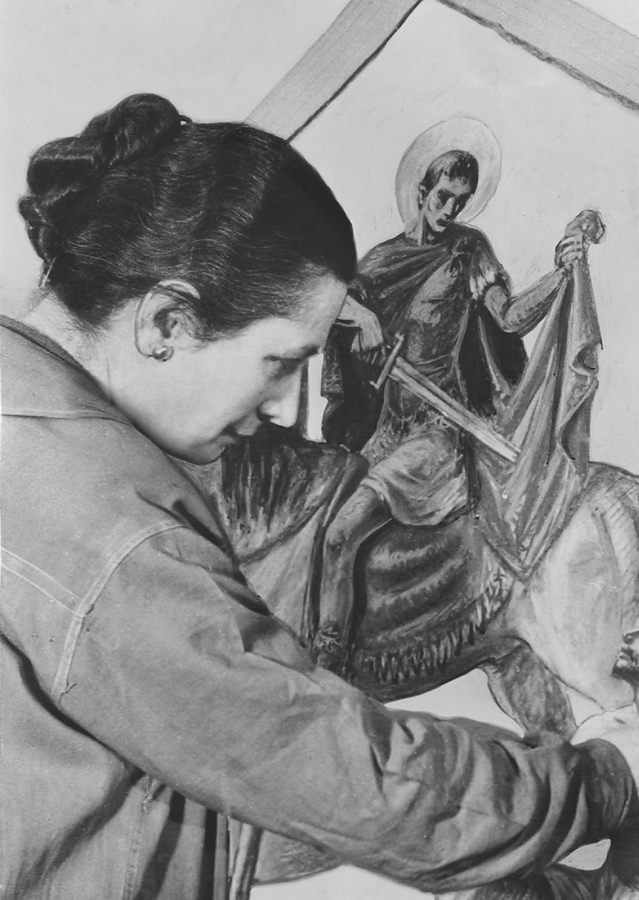
Meière painting Triptych 138, St. Martin of Tours and a Beggar. Photograph in Citizens Committee for the Army, Navy, and Air Force Records, 1940-1945. Archives of American Art, Smithsonian Institution, Washington, DC
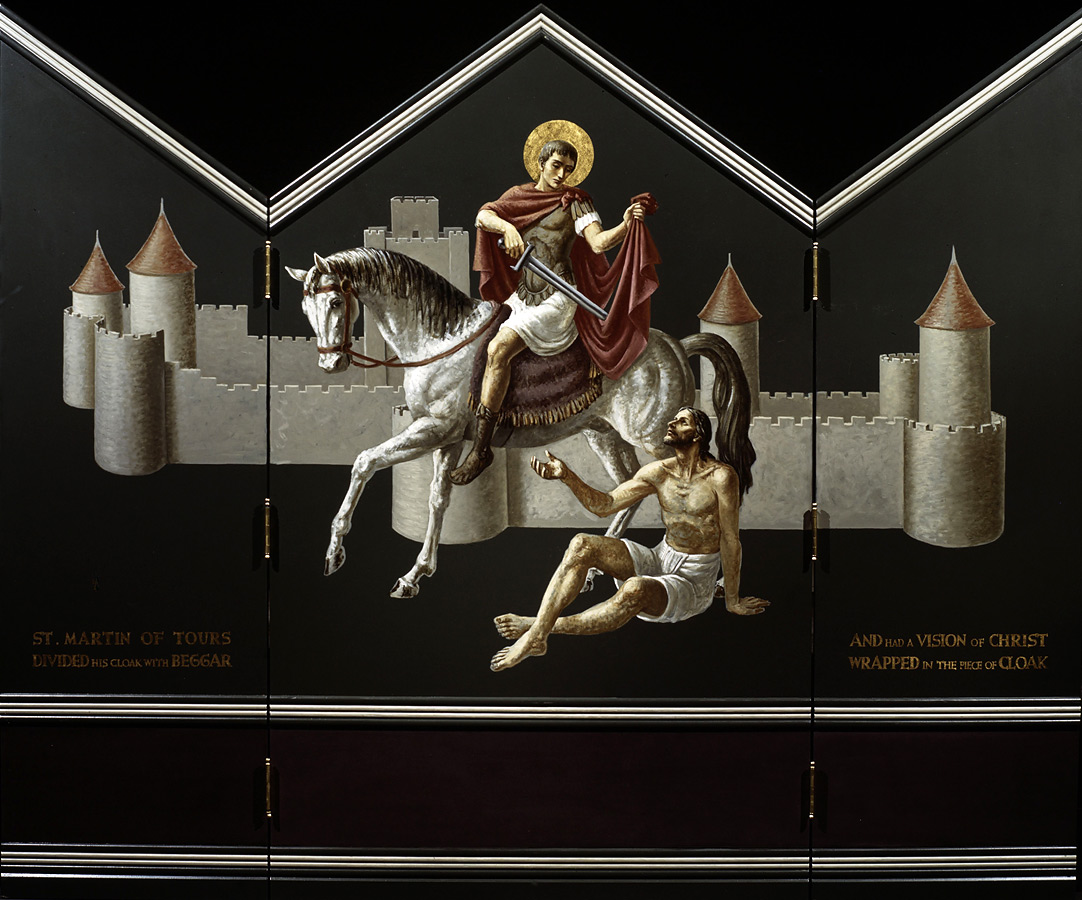
Triptych 138, St. Martin of Tours and a Beggar, whereabouts unknown. Photograph in Citizens Committee for the Army, Navy, and Air Force records, 1940-1945. Archives of American Art, Smithsonian Institution, Washington, DC
Hildreth Meière, “Her Life and Times (not Hard),” unpublished manuscript, Hildreth Meière Papers, Archives of American Art, Smithsonian Institution, Washington, DC. See also Catherine Coleman Brawer and Kathleen Murphy Skolnik, The Art Deco Murals of Hildreth Meière (New York: Andrea Monfried Editions, 2014): 204-07.
A. William Hoagland, “Triptychs for American Servicemen During World War II,” William Benton Museum of Art Bulletin 1, 8 (Storrs, Connecticut: University of Connecticut, 1980): 19.
“A Triptych for the Armed Services” (New York: Citizens Committee for the Army and Navy, Inc., n. d.): 20.
See Brawer, Walls Speak: The Narrative Art of Hildreth Meière (St. Bonaventure, New York: St. Bonaventure University, 2009): 78-81.